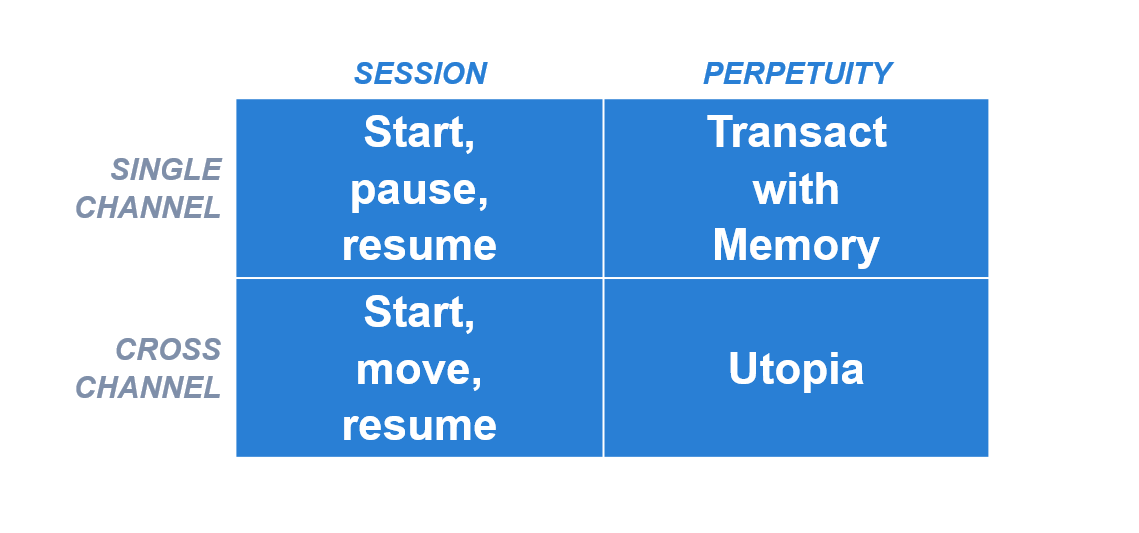We need to bring our best thinking in marketing and relationship building to create conversational AIs that successfully create rapport with consumers. Here’s why:
Over the past 20 years, I have learned a few marketing concepts . Many of which came from Seth Godin, such as Relationship marketing, Nurture marketing, and even MeMarketing. The root of each is an empathetic concept of WiiFM, or “Whats in it for Me” (from a consumer perspective). The idea that you exchange something of value for contact information (back in the day, an email address for the right to send a newsletter), and you will continue to respect the relationship (without spamming) and build upon it (with additional value.) Over the years, that has evolved into drip marketing, marketing automation, 1:1 marketing, and even as far as Context Marketing.
Last week, I learned two new concepts from Louis Têtu, the CEO of Coveo. The first is a consumer POV of “WYNN” (What you need Next), and the second is Relevance Marketing, for which they actually have a Relevance Maturity Model for search. In their case, Coveo is focused on using their search technology to understand and anticipate intent. I love it.
I started thinking about the common thread between all of these concepts, and how they apply in today’s challenges of data privacy, data ownership, and the consumer’s right to be forgotten. Brands have to think differently about how we engage and manage relationships, and I realized that the common thread is Trust.
The team at Lytics understands this well, and is making the Case for Trust Based Marketing. I recently had a chance to catch up with their CMO over lunch, and he brought to light the three pillars of trust:
- Understanding
- Transparency
- Continuity
That seems very logical for both digital and analog relationships.
- You listen and learn about your relationships and are empathetic.
- You are transparent yourself, perhaps a little vulnerable, and provide “value exchange.”
- You pick up where you left off, demonstrating your interest in and capacity for personalizing the user experience.
The output from the pillars of trust are confidence (that you are capable), and respect (that the relationship is important enough). Brands have been trying this for decades. Yet, marketers continue to push monolithic content to the masses and lack good personalization and segmentation strategies which benefit the audience and not just the conversation rate. For a platform like Lytics, their goal is to understand the holistic relationship, and help marketers orchestrate the what, where, and when of messaging. They are tackling all three pillars of Trust from an actionable insights perspective.
So what does this have to do with Conversational Memory? A lot. Conversational AI and Conversational experiences start to unlock very different ways for marketers to interact. Rich bi-directional dialogues are a goldmine of customer insights (the Understand pillar), well beyond what we can extract from browsing (clicks and patterns) and even search behavior (fragments). These dialogues enable a brand to suggest and serve content and solutions in a different way (the Transparency pillar), and offer a vehicle to capture and store customer information which can be used for the consumer benefit. Those benefits can include a better understanding of intent and need, accelerating transactions, forms, and even leveraged to predictively enhance the content being served.
In the video above, we show a simple conversational transaction. Throughout the interaction, we are storing entities (or slots) of information which might be helpful and further the relationship. In this case, it is travel dates, cities of interest, durations, and profile data. That session-based data is stored in “input” and “context” fields, and some data we may elect to move into a visitor’s profile. In this example we transact on a booking, but start our second chat session with a better understanding of potential intent (rebooking at hotel, or support from the last trip.) We may elect to permanently store profile data, or push into a CRM or data platform such as Lytics for ongoing continuity.
Conversational AI offers marketers unique opportunities to guide consumers through a message, nudge them at Conversational Micro-moments, and listen and learn about your relationship.
Along with that understanding and transparency, now comes the importance for brands to be consistent (the Continuity pillar) with conversations across channels, devices, and micro-moments of conversation.
Conversations pause and resume an hour or a day later (perhaps even in a different channel). Conversations also end (with success or failure), but may be picked up in context at a later point.

Conversational Memory is yet another consumer expectation which brands will need to rise and meet. As your customer dialogues move from exploration, to sales, to transactions, to support, and bounce across Facebook Messenger, to your site, into a product, and back to a native application, you will need to gracefully meet them on their terms with conversational memory.
About Cognigy
Cognigy.AI, the premier Conversational AI Platform, enables brands to design, build, and manage smart conversations in one location across any channel such as Facebook Messenger, Alexa, Slack, Skype and many others. It helps companies to improve service and loyalty, decrease costs, speed growth, free up resources, and stay at the forefront of customer expectations.





.png?width=60&height=60&name=AI%20Copilot%20logo%20(mega%20menu).png)


